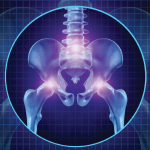 SAN DIEGO—Managing pain due to rheumatic diseases involves more than active pharmacologic treatment, and the steps patients take on their own to relieve their symptoms is being increasingly recognized as fundamental to good care, according to an expert at ACR Convergence 2023.
SAN DIEGO—Managing pain due to rheumatic diseases involves more than active pharmacologic treatment, and the steps patients take on their own to relieve their symptoms is being increasingly recognized as fundamental to good care, according to an expert at ACR Convergence 2023.
In the session, panelists discussed study results that show self-management works, tools that are emerging to put self-management to better use and the still-early, but promising, realm of virtual reality in self-management.
Beyond the Clinic
David Williams, PhD, professor of anesthesiology, internal medicine, rheumatology, psychology and psychiatry at the University of Michigan, Ann Arbor, Mich., said that patients may see a clinician for medication, but efforts to help their quality of life don’t stop there.
“That patient has to go home. And when they go home, they have to decide whether they’re going to adhere to the recommendations that they’ve gotten from these providers,” he said. “And chances are, they’re also going to experiment a bit about things they have found that help make their pain less intense.”
Self-management is what patients do at home and on their own. “Good care does combine the two,” he said. “You combine those two [elements], and you get whole-person health.”
Research has suggested that using digital options for pain self-management typically has a small- to medium-effect benefit. Some results actually rival the results of traditional care, Dr. Williams said.
A meta-analysis on self-management for chronic widespread pain found it reduced short- and long-term pain compared with usual care, but with few differences on pain and function compared with active treatment.1
Another meta-analysis, on knee osteoarthritis, found benefits in terms of pain, stiffness and quality of life.2
At-Home Resources
“In addition to more traditional forms of care, we’re seeing an emphasis on what the patient can be doing and helping to structure that for the patient,” Dr. Williams said.
In the book Chronic Pain Reset, Afton Hassett, PsyD, provides readers with 30 evidence-based strategies or activities for better managing pain and increasing well-being, while connecting readers with online resources. She also describes the neuroscience of pain in digestible terms, as well as the role of thoughts, emotions and behavior in pain processing, Dr. Williams noted.
“It’s not just a book that you read, but it’s an interactive type of book [in which] you’re able to learn about the things you could be doing to manage the pain more successfully,” he said.
Online Resources
More than 500 apps and more than 500 websites on self-management of pain exist. But Dr. Williams noted that not all are effective tools.
“The problem is that the majority of these websites and apps were developed by technology experts and often times without any clinician input or people who know anything about pain,” he said. “They’re very cool technology, but they don’t really have the clinical expertise in terms of what content is being offered.”
An evaluation of 27 websites, using the SMS14 scale that assesses the sites across many categories, found that almost all of them included pain education and often included cognitive behavior skill. Some offered an approach to relaxation or breathing. But only one focused on cultural relevance, so most may be limited to specific audiences, Dr. Williams said.
An evaluation of apps, using both the SMS14 and the MARS (Mobile App Rating Scale), found that only two of 19 had any pain education. The apps did tend to cover relaxation and had more tracking capability, but again no cultural relevance aspect, Dr. Williams noted. The apps were pretty good in terms of graphics and visual appeal and functionality, but not as good on information and engagement.3
Pain Guide, a free online tool developed at the University of Michigan, offers education on types of pain care and self-management, as well as symptom and activity tracking that allows patients to track multiple symptoms and see how they align or diverge. If a person logs better sleep and sees reduction in pain reduces the same time, it may reinforce the patient’s motivation to improve their sleep habits.
Overall, self-management tools are demonstrating their effectiveness; the struggle is keeping patents interested and engaged.
“We have some work to do, academically, on the side of engagement and retention,” Dr. Williams said. “We know these things work; we just have to develop interventions that will allow folks to be more engaged with them so they’ll stay with them for the long haul.”
Virtual Reality
Brandon Birckhead, MD, MHDS, a psychiatry resident at Johns Hopkins University School of Medicine, Baltimore, studies immersive technology. He addressed the use of virtual reality for pain self-management, noting that evidence exists that it may be effective, but research and refinement are ongoing.
“This [approach] is a computer on your face—it is getting better and better, from the early 90’s to the modern era now, but still a way to go,” he said.
In a study of a skill-based virtual reality program, researchers attempted to take self-management items discussed in books and turn them into bite-sized, virtual reality format pieces. Study participants with chronic lower back pain did a curriculum of 56 days for an average of six minutes a day, with the 180 subjects evenly split between a sham program and the active program.4
The sham program was a nature video. In the study’s active-treatment arm, participants had immersive experiences that followed eight weekly core themes on management and living better with chronic pain. The participants came from a convenience sample from online ads.
Researchers found a statistically significant difference in clinically meaningful reduction in pain intensity or overall pain interference after 24 months of treatment. However, given this was a convenience sample, more rigorous work is needed.
“We need this recruited from hospitals,” Dr. Birckhead said. One such effort is an U.S. National Institutes of Health-funded Back Pain Consortium (BACPAC) Research Program, which will have data on patients recruited from hospitals. “But we will need more studies with long-term data,” he said.
Thomas Collins is a freelance medical writer based in Florida.
References
- Geraghty AWA, Maund E, Newell D, et al. Self-management for chronic widespread pain including fibromyalgia: A systematic review and meta-analysis. PLoS One. 2021 Jul 16;16(7):e0254642.
- Wu Z, Zhou R, Zhu Y, et al. Self-management for knee osteoarthritis: A systematic review and meta-analysis of randomized controlled trials. Pain Res Manag. 2022 Mar 2;2022:2681240.
- Devan H, Farnery D, Peebles L, et al. Evaluation of self-management support functions in apps for people with persistent pain: Systematic review. JMIR Mhealth Uhealth. 2019 Feb 12;7(2):e13080.
- Garcia LM, Birckhead B, Krishnamurthy P, et al. An 8-week self-administered at-home behavioral skills-based virtual reality program for chronic low back pain: Double-blind, randomized, placebo-controlled trial conducted during COVID-19. J Med Internet Res. 2021 Feb 22;23(2):e26292.

